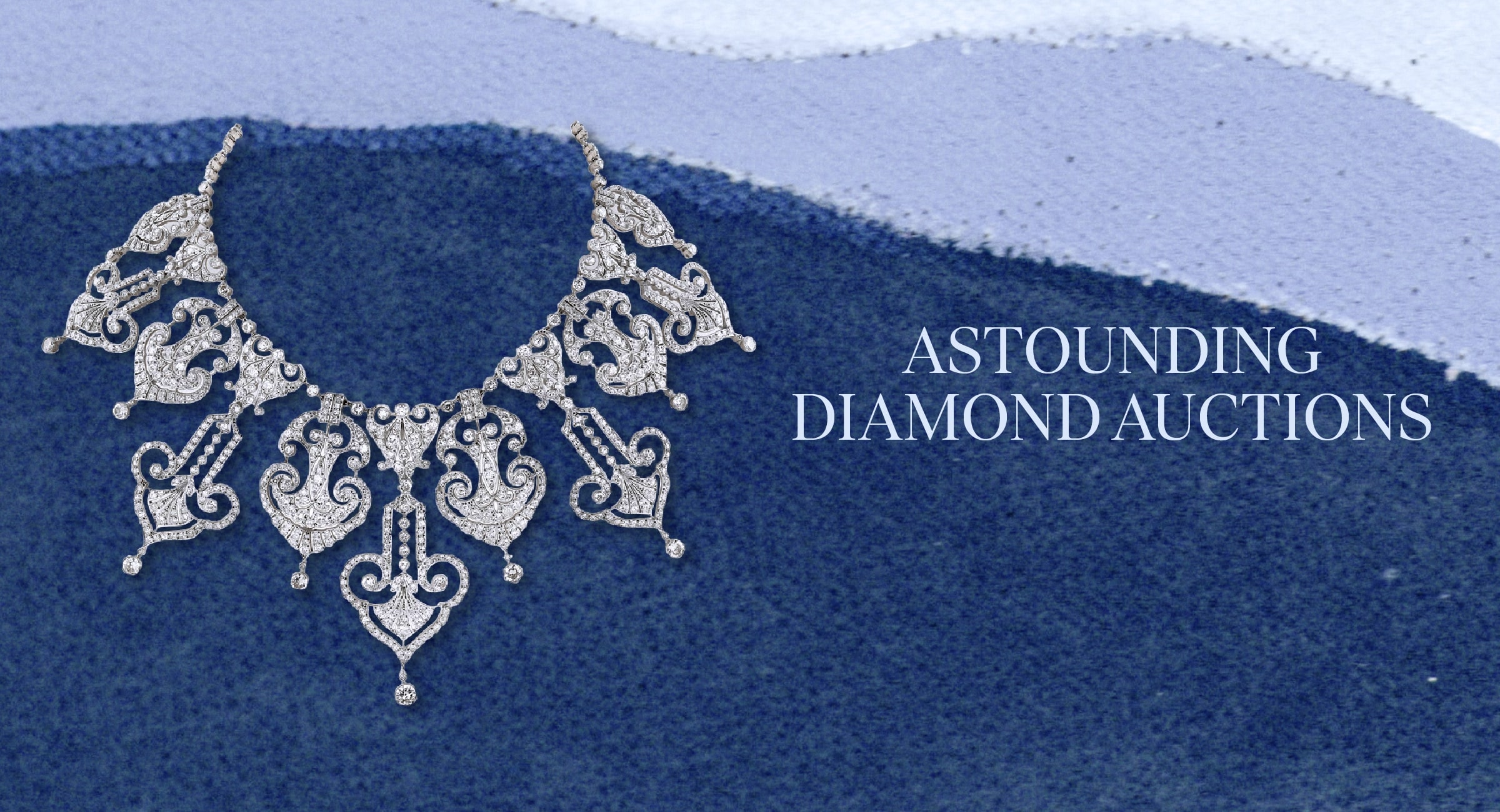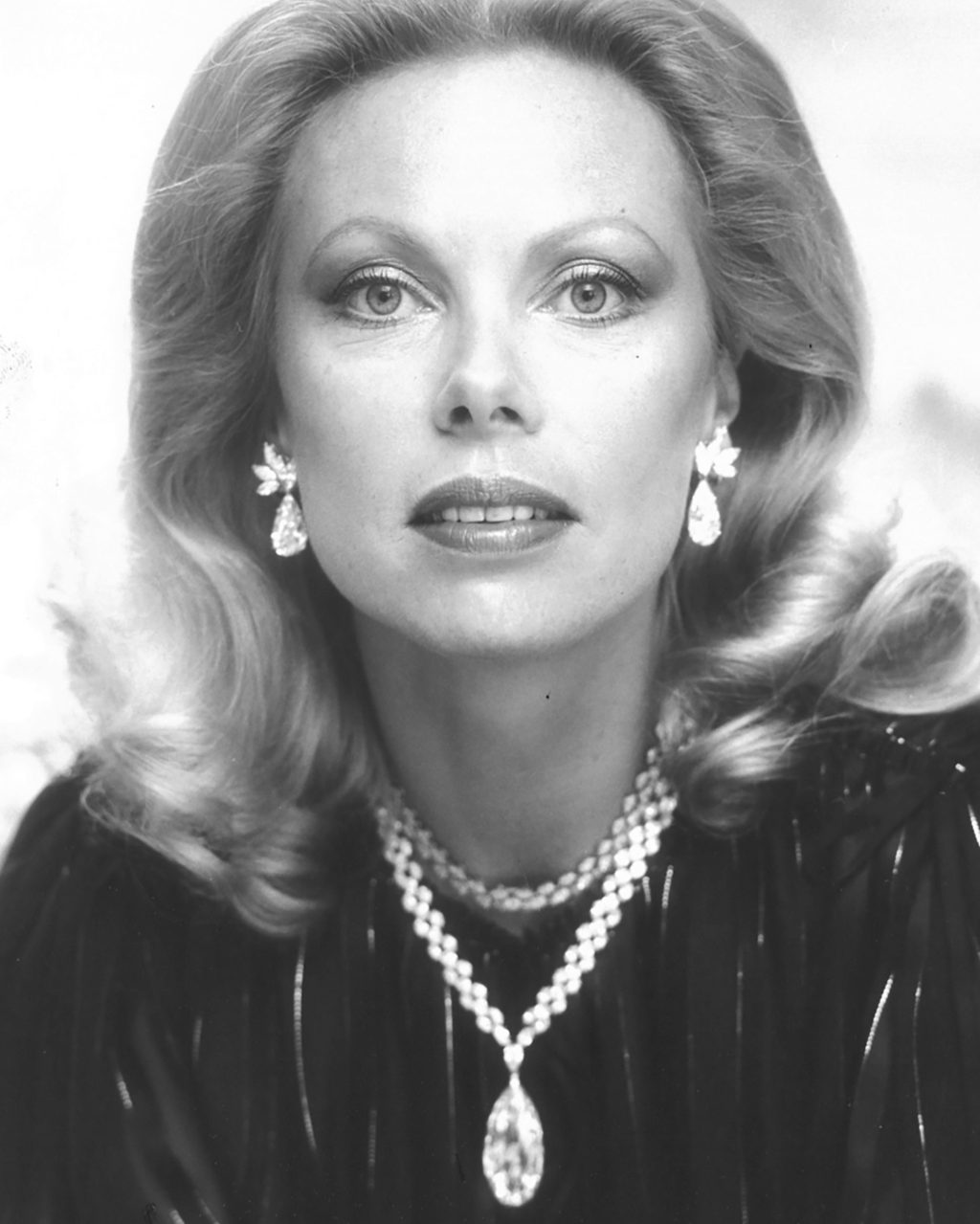Bidding Wars: Diamonds Under The Gavel
What does it take for a natural diamond to set a record at auction? Whether it’s the size or the pedigree, each gemstone has its own record-setting personality that stands out among the lots

When an exceptional natural diamond is presented for auction, there’s a frisson of energy that goes through the room, be it in person or online at home. Buyers are usually waiting for their chance to place their bids, audience members are excited to see an action-packed battle for the win, and auction fever – the adrenaline rush that usually causes bidders to abandon their strategy in the moment – sets in. But what is it about a stone that makes it auction worthy? Usually a combination of factors ranging from legacy to craftsmanship. The iconic diamonds on this list each demonstrate that unique X factor that makes a truly memorably, bid-worthy piece.
ONCE IN A BLUE, DIAMOND MOON
While every natural diamond is unique, there are some that are truly rare jewels, that only appear once in a lifetime of even a skilled master cutter. One such stone was the Oppenheimer Blue diamond that appeared on the block at a Christie’s auction in May 2016. A 14.62-carat classic emerald-cut diamond that was discovered in Botswana, and owned by diamond magnate Sir Philip Oppenheimer, its exceptional Vivid Blue colour made it one-of-a kind and resulted in a record-setting price of nearly 58 Milllion USD. “What it took on Mother Nature’s behalf to make that stone—the odds are unbelievable,” said Daphne Lignon, senior vice-president, head of jewellery Americas, on the Christie’s blog. In terms of numbers, it is estimated that only 1 per cent of all blue diamonds that are graded by the Gemological Institute of America (GIA) are this vivid a colour.

A QUEEN-SIZED STONE
When it comes to gemstones, occasionally size does matter. And the chances of a large, perfect stone that’s naturally coloured and tops in the Four C’s are even rarer. But in May 2003, the world was introduced to the largest flawless Fancy Vivid Pink natural diamond. Dubbed the Pink Star, the walnut-sized, 59.06 carat oval gem set records when it was sold at auction in April 2017 for a winning bid of over 70 Million USD. The GIA told the Financial Times in May 2003 that, “it’s our experience that large polished pink diamonds – over ten carats – very rarely occur with an intense colour… The GIA Laboratory has been issuing grading reports for 50 years and this is the largest pink diamond with this depth of colour [vivid pink] that we have ever characterised”.
“The walnut-sized, 59.06 carat oval gem set records when it was sold at auction in April 2017 for a winning bid of over 70 Million USD.“

CRAFTING BEAUTY
It takes the hands of a master to turn a gemstone into a covetable piece of diamond jewellery. And the skill of a true craftsperson is often revealed in the ingenuity of design – like this diamond-studded necklace that also doubles up as a regal tiara. Traced back to the 1940s, the design features 979 pieces or 62.50 carats of diamonds set in white gold. Eleven ingeniously hidden screws help convert it into an equally dramatic tiara. The Renaissance-inspired piece sold for INR 52,59,870 (0.7 Million USD) at Indian online auction house, AstaGuru’s Heirloom Jewels sale in 2021; a price to mark the multiple hands that finessed this gift from the earth.
“A natural diamond often lives multiple lives. Passed down through generations, these gemstones are a witness to history.”

JEWELS THAT TELL STORIES
A natural diamond often lives multiple lives. Passed down through generations, these gemstones are a witness to history. The more dramatic and story-filled the journey, the more valuable the stone becomes. Case in point is Le Grand Mazerin, a 19.07 carat pink diamond that was part of the French crown jewels. The stone was mined in Golconda in the 17th century, a source for some of the most legendary diamonds known. It was bought by the Chief Minister of France, Eminence Cardinal Mazarin who named the stone after himself. In 1661, the powerful man bequeathed the gem to the French crown and over 225 years it was worn by four kings, four queens, two emperors and two empresses until it came into the hands of Frédéric Boucheron, founder of the eponymous jewellery house. A legacy of French splendour, Christie’s auctioned the royal jewel in 2017 for 14.5 Million USD.
“A legacy of French splendour, Christie’s auctioned the royal jewel in 2017 for 14.5 Million USD.”

TOKENS OF AN ERA
Although it might not set records, this devant-de-corsage brooch by Cartier that sold for 10.6 Million USD in 2019 is significant for being a perfect example of a specific period in history. Featuring a 34.08 carat pear-shaped natural diamond centrepiece, an assemblage of smaller brilliant-cut diamonds, all set in platinum and white gold, the delicate brooch is typical of the Belle Époque that took over Europe from 1890 to 1914. An arts and cultural movement that was typified by a love for femininity, nature, and fantasy. It was a period of creativity vitality that was cut short with the start of World War I. The brooch was created by the French luxury house for diamond-mine tycoon, Solomon Barnato Joel in 1912 and is a dainty example of a ‘serti muguet’ or Lily-of-the-Valley setting.

Like an haute couture fashion show, auctions are where the rarest, most brilliant natural diamonds appear briefly in front of the world before they are whisked away into the hands of their new owners. So next time you get invited to an auction, seize the chance to view some of the most important jewels yet.
